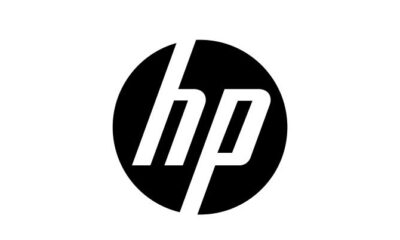Technology
Adobe Digital Price Index: Online Prices Fall 1.4% In February; Rising Food Costs Continue To Cool

- Online prices fell 1.4% compared with February 2022, and dropped 0.3% from January 2023
- Price increases for groceries have continued to slow, easing food costs for consumers
- Discretionary categories including electronics, computers and toys continue to see sharp price drops
Adobe (Nasdaq:ADBE) announced the latest online inflation data from the Adobe Digital Price Index (DPI), powered by Adobe Analytics. Online prices in February 2023 fell 1.4% year-over-year (YoY), marking the sixth consecutive month of a YoY price decrease, with over half of the categories (10 of 18) tracked by Adobe seeing falling prices on an annual basis. On a monthly basis, online prices in February fell 0.3%.
February’s YoY price decline was primarily driven by sharp drops in discretionary categories including electronics (down 12.6% YoY, down 1.7% MoM), computers (down 16.4% YoY, down 1.4% MoM) and toys (down 6.5% YoY, down 0.4% MoM). Consumers also saw prices fall YoY for home goods: Appliances were down 3.8% YoY (down 1.8% MoM), while home/garden products fell 3.8% YoY (up 0.2% MoM). The furniture/bedding category fell for the first time after rising for 33 consecutive months, dropping 0.1% YoY (down 0.6% MoM).
In certain categories with persistent inflation, YoY price increases have slowed in recent months. Grocery prices were up 11.4% YoY (up 0.8% MoM), down from January 2023’s 12.6% YoY increase. This marks the fifth consecutive month where YoY price increases for groceries have decelerated from September’s record high, when prices rose 14.3% YoY. In the apparel category, prices were up 5.1% YoY (up 0.3% MoM); Contrast this with February 2022, when apparel prices were up 16.7% YoY. In another category such as tools/home improvement, prices rose 6.2% YoY (flat MoM), down from January 2023’s 6.9% YoY increase and December 2022’s 8.3% YoY increase.
Notable Categories in the Adobe Digital Price Index for February
Adobe’s Digital Price Index provides the most comprehensive view into how much consumers pay for goods online, complementing the Bureau of Labor Statistics’ Consumer Price Index, which captures offline prices. Powered by Adobe Analytics, the DPI analyzes one trillion visits to retail sites and over 100 million SKUs across 18 product categories: electronics, apparel, appliances, books, toys, computers, groceries, furniture/bedding, tools/home improvement, home/garden, pet products, jewelry, medical equipment/supplies, sporting goods, personal care products, flowers/related gifts, non-prescription drugs and office supplies.
In February, ten of the DPI’s 18 categories saw YoY price decreases, with the flowers/related gifts category falling the most at 25% YoY. Eight categories experienced YoY price increases, including personal care, office supplies, pet products, groceries, non-prescription drugs, tools/home improvement, medical equipment/supplies and apparel.
On a MoM basis, six of the 18 categories in the DPI saw prices fall. Price increases were observed in twelve categories including personal care, office supplies, books, home/garden, pet products, groceries, non-prescription drugs, tools/home improvement, flowers/related gifts, sporting goods, medical equipment/supplies and apparel.
Notable categories for February 2023 include:
- Groceries: Prices rose 11.4% YoY (up 0.8% MoM) but have slowed in the past five months, rising 12.6% YoY in January, 13.5% YoY in December, 13.7% YoY in November and 14.0% YoY in October. In September, prices peaked, rising 14.3% YoY. Consumers are increasingly buying more of their groceries online, and this category has generally moved in lock step with the Consumer Price Index.
- Furniture & Bedding: Prices were down 0.1% YoY (down 0.6% MoM), after rising for 33 consecutive months, peaking in March 2021 when prices rose 5.7% YoY. A year ago, in February 2022, prices were up 4.7% YoY. Consumers have become increasingly comfortable buying furniture online, after a pandemic where many wanted to spruce up their living spaces and had no choice but to tap e-commerce.
- Electronics: Prices have fallen sharply in recently months, dropping 12.6% YoY in February (down 1.7% MoM) and 11.9% YoY in January. Contrast this with a year ago, in February 2022, when prices were down 3.2% YoY. As a major discretionary category, electronics prices continue to see sharp drops even after the holiday shopping season where prices fell 12.0% YoY in December and 13.4% YoY in November (a record YoY price drop driven by heavy discounting during Cyber Week).
- Apparel: Prices were up 5.1% YoY (up 0.3% MoM). In recent months, price increases for the category have slowed (up 5.1% YoY in January, up 0.9% YoY in December, up 3.2% YoY in November) compared to a year ago when prices rose 16.7% in February 2022 (up 15.8% YoY in January 2022, up 16.6% YoY in December 2021, up 17.3% YoY in November 2021).
Additional Insights on the Digital Economy
As more daily activities move online, timely e-commerce insights have become critical for businesses and policymakers to understand how consumer habits are changing. As the leading authority on the digital economy, Adobe analyzes trillions of real-time online transactions to uncover the most important trends. Today, Adobe has partnered with The Weather Company, an IBM business, to leverage weather data from the world’s most accurate forecaster. A new report shows that disruptive weather events (rain, snow and wind) boosts e-commerce by over $13 billion a year when consumers are pushed to stay home—more than what shoppers spend during an entire Cyber Monday.
Methodology
Adobe’s DPI is modeled after the Consumer Price Index (CPI), published by the U.S. Bureau of Labor Statistics, and uses the Fisher Price Index to track online prices. The Fisher Price Index uses quantities of matched products purchased in the current period (month) and a previous period (previous month) to calculate the price changes by category. Adobe’s analysis is weighted by the real quantities of the products purchased in the two adjacent months.
Powered by Adobe Analytics, Adobe uses a combination of Adobe’s AI and machine learning framework Adobe Sensei and manual effort to segment products into the categories defined by the CPI manual. The methodology was first developed alongside renowned economists Austan Goolsbee and Pete Klenow. Adobe Analytics is part of Adobe Experience Cloud, which over 85% of the top 100 internet retailers in the U.S.* rely upon to deliver, measure and personalize shopping experiences online.
About Adobe
Adobe is changing the world through digital experiences. For more information, visit www.adobe.com.
*Per the Digital Commerce 360 Top 500 report (2021)
Source – Adobe
-

 Auto2 years ago
Auto2 years agoHonda Marine Debuts All-New BF350 Outboard Company’s First V8 Motor Available Commercially, Flagship Model Offers Premium Power and Unparalleled Performance for Extraordinary Boating Experiences
-

 Auto2 years ago
Auto2 years agoNew Features Further Increase Desirability Of Bentayga Range
-

 Technology2 years ago
Technology2 years agoOracle Partners with TELMEX-Triara to Become the Only Hyperscaler with Two Cloud Regions in Mexico
-

 Auto2 years ago
Auto2 years agoHonda and Acura Electric Vehicles Will Have Access to Largest EV Charging Networks in North America Aided by New Agreements with EVgo and Electrify America
-

 Lifestyle2 years ago
Lifestyle2 years ago2023 Nike World Basketball Festival Brings the Best of Basketball Style, Culture and Community














